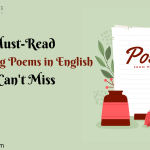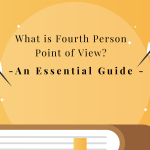Have you ever wished to have your writing published? Self-publishing Kindle eBooks makes that ambition more attainable than before. But it has its own set of benefits and drawbacks, just like any other endeavor. We’ll go into great detail about the benefits and drawbacks of self-publishing your Kindle eBook in this post to help you determine if it’s the best choice for you.
What is Kindle eBook Self-Publishing?
Self-publishing books on Amazon’s Kindle platform without the assistance of a traditional publishing house is known as Kindle eBook self-publishing. around time, this technique has developed to provide writers with a more efficient and straightforward way to connect with readers all around the world.
Pros of Kindle eBook Self-Publishing
Ease of Access and Use
The exceptional accessibility and usability of self-publishing Kindle eBooks is one of their main advantages. The user-friendly and straightforward Amazon Kindle Direct Publishing (KDP) platform makes it simple for aspiring writers to publish their manuscripts.
Users are assisted by the platform at every stage, from formatting the eBook to determining the pricing and selecting a distribution method. With only a few clicks and its simplified approach, anyone, even with no technological experience, can publish their work and reach a worldwide audience.
Bypassing the conventional gatekeepers and reaching readers directly, authors are now able to share their stories thanks to the democratisation of publishing.
Cost-Effective
The affordability of self-publishing Kindle eBooks is one of its biggest benefits. Large upfront expenditures for printing, distribution, and marketing are frequently associated with traditional publishing. By comparison, authors can avoid these costs by self-publishing on Kindle. Writers can reach a worldwide readership by immediately uploading their works to the Kindle platform for a small initial expenditure. Furthermore, writers on a tight budget can still benefit from Kindle Direct Publishing (KDP), which provides a number of free tools and services to assist authors in formatting their eBooks and promoting their works.
Flexible Pricing Options
Self-publishing Kindle eBooks has many benefits, but it’s important to consider any potential downsides as well. Negotiating the world of prices is one significant issue that writers encounter.
Choosing the appropriate pricing for your eBook can be difficult, especially with so many alternatives available. Adopting flexible pricing techniques, however, can lessen this difficulty.
Authors can maximize profits, target different audience segments, and adjust to market changes by providing multiple pricing tiers. However, finding the ideal balance between value and price is still a complex process that necessitates significant thought and market research.
Real-Time Sales Tracking
When it comes to self-publishing Kindle eBooks, real-time sales tracking presents a dual challenge. Instantaneous sales data monitoring provides insightful information about how well your titles are performing, but it may also be stressful and distracting.
Refreshing sales dashboards all the time might cause one to become obsessed with small changes, which takes time away from writing or marketing. Furthermore, real-time tracking’s immediacy might breed impatience and false expectations of results right away.
Keeping a positive outlook on the process of self-publishing requires striking a balance between the advantages of real-time data and the demands of concentration and endurance.
Multiple Formats Availability
The availability of numerous formats is an important consideration in the world of self-publishing Kindle eBooks. Although the Kindle format is the most widely used format and works with a variety of devices, such as tablets, smartphones, and Kindle e-readers, other formats, such as ePub and PDF, are as important.
Providing a variety of formats makes content more accessible and accommodates users with varying platform or device preferences. To ensure consistency across different mediums, handling several formats can be difficult and require rigorous formatting and compatibility tests.
Accepting numerous formats, in spite of the extra complexity, expands the readership and improves reader ease, which eventually supports the popularity of self-published works.
Continuous Income Stream
Self-publishing Kindle eBooks can have alluring advantages, including creative freedom and possibly large profits, but it’s important to carefully consider the disadvantages, such as the lack of a steady source of income. In contrast to regular work, which guarantees a consistent paycheck, self-publishing income is subject to unpredictable fluctuations.
Variations in sales can result from a variety of factors, including market trends, competition, and marketing initiatives.
Understanding that sustained success in self-publishing frequently demands continuous effort, adaptation, and a willingness to negotiate the ups and downs of the digital marketplace, authors must carefully manage their expectations and financial planning.

Detailed Analysis of Cons
Market Saturation
Market saturation is one of the major disadvantages of self-publishing Kindle eBooks. Because there are so little entry hurdles, a huge amount of eBooks are available in the Kindle store, making it harder and harder for individual authors to stand out.
Because of this overabundance, even excellent books may be overlooked due to the sheer number of options. To become visible, authors frequently need to devote a significant amount of time and resources to marketing and promotion, and even then, success is not guaranteed.
Because of the intense competition, creating a distinctive selling concept and using effective marketing are necessary to separate out from the crowd.
Quality Control
One major disadvantage of self-publishing Kindle eBooks is how difficult it is to maintain quality control. The whole responsibility for ensuring the accuracy of one’s work rests with the author in the absence of the stringent editing procedure provided by traditional publishing.
This covers everything, from the content’s general coherence and quality to its grammar and formatting. Lack of professional editing is a common problem with self-published works, which can result in unfavourable reviews and lost credibility.
To maintain high standards, authors must therefore either spend a significant amount of money on professional editing services or commit a significant amount of time and energy to self-editing their manuscripts.
Limited Physical Presence
The restricted physical presence of self-publishing Kindle eBooks is a major disadvantage. Kindle eBooks are mostly available digitally, in contrast to traditional publishing, which has books available in actual bookstores, libraries, and other retail locations.
This removal from physical locations may make the content less visible and discoverable to prospective customers who would rather peruse the product in-store or are less likely to read digitally. Furthermore, one loses the allure of a real bookshelf and the tactile pleasure of holding a printed book.
This restriction may have an adverse effect on sales as well as the reading experience in general, thereby offending a market group that places a high value on physical books.
Marketing Challenges
The need for self-marketing is a major obstacle to self-publishing Kindle eBooks. Authors that self-publish must develop and implement their own marketing plans, in contrast to traditional publishing, which assigns a specialised team to handle promotion. It might be intimidating, particularly for people who have never worked in marketing.
Understanding digital marketing, participating in social media, and frequently spending money on advertising are necessary for effective promotion.
Furthermore, with so many new books being released every day, it can be difficult to stand out in a crowded market. In order to establish and preserve visibility for your eBook, you must always work hard and be creative in this very competitive market.
Technical Skills Required
Platform reliance is a major disadvantage of self-publishing Kindle eBooks. Authors that decide to publish just via Amazon’s ecosystem—Kindle Direct Publishing (KDP)—may find themselves constrained.
Since books are exclusively available to Kindle users, this exclusivity may limit the audience it can reach and alienate customers who prefer physical books or other e-readers.
Furthermore, an author’s revenue and book visibility may be directly impacted by Amazon’s restrictions and adjustments, creating a situation in which authors must constantly adjust to sustain their success. This over-reliance on one platform can seriously jeopardise the stability and advancement of an author’s career in the long run.
Royalty Structure
The royalties structure is one of the major disadvantages of self-publishing Kindle eBooks. There are significant expenses and restrictions even if Amazon provides appealing royalties of between 35% or 70%, depending on pricing and distribution choices. eBooks must be priced between $2.99 and $9.99 to qualify for the 70% royalty option.
Delivery costs are determined by file size and may lower profits. Furthermore, regardless of price, writers in some areas are limited to the 35% rate. Authors hoping to maximise their income from their works may find it more difficult to be profitable and flexible due to this intricate and occasionally onerous royalties structure.
Conclusion
With little out-of-pocket expenses and total creative control, authors may self-publish their Kindle eBooks and reach a worldwide readership. For numerous writers, the platform’s competitive royalties, speedy publication, and ease of use make it a desirable choice.
But it’s critical to recognize the difficulties, which include quality assurance, market saturation, and the requirement for successful self-promotion. You may improve your chances of success in the self-publishing industry and make well-informed decisions by comprehending and weighing these benefits and drawbacks.
Frequently Asked Questions
Publishing an eBook on Kindle is free. However, optional costs can include professional editing, cover design, and marketing, which can enhance your book’s quality and visibility.
Effective marketing involves a mix of strategies such as social media promotion, email marketing, engaging with readers through blogs and newsletters, and utilizing Amazon’s promotional tools like Kindle Countdown Deals and Amazon Advertising.
Kindle offers two main royalty rates: 70% for eBooks priced between $2.99 and $9.99, and 35% for those outside this range. Factors such as delivery costs and regional pricing can also impact your earnings.
Yes, you can publish without extensive technical skills. While some basic knowledge is helpful, many resources and professional services are available to assist with formatting, cover design, and other technical aspects.
Kindle eBook self-publishing can be highly rewarding, offering control, global reach, and potential financial gain. However, it requires dedication, quality content, and effective marketing strategies to overcome challenges and succeed.
















